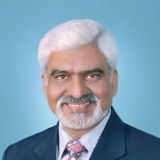Modi has invited Obama (whose own country has written him off)
First, Modi broke the unexpected news on Twitter.
In response to this was the White House’s affirmative tweet that the US president was preparing for the ceremony on Jan. 26 in New Delhi.
Since 1950, the country has hosted heads of state of other countries as chief guests for its Republic Day, a holiday that commemorates the adoption of the Indian Constitution.
However, it is hard to tell whether this was the first time an invitation was extended to a US president. “These invitations are only publicized when and if accepted. We’ll only know when India opens its archives,” Donald Camp, a retired senior foreign service officer whose career was divided between East and South Asia, told Quartz via Twitter.
It is, no doubt, a deft political move by the new prime minister, precisely because conventional wisdom suggested Modi would keep the US at arm’s length. However, as Milan Vaishnav, the South Asia associate of the Carnegie Endowment for International Peace, told Quartz, “No single visit can cement US-India ties; the hard work is always in the follow-up. And there, we see plenty of lingering issues between the two democracies from trade to climate change to intellectual property.”
As explained in this Brookings report, building Indo-US relations would require both time and dexterity. Take for instance the fact that the US denied Modi a US visa for a decade, over his alleged involvement in the 2002 Gujarat riots. Then, the arrest of India’s deputy counsel general, Devyani Khobragade, in New York last year, opened a can of worms of estranged diplomacy between the two countries.
Even Modi’s visit to the US in September this year, where he received a grand reception from the Indian-Americans, did little to infuse life into the sluggish relationship between the two countries. The end result was not as cheerful. Though the two leaders covered issues including economics, climate change and regional security, they failed to announce any breakthroughs, or commit with each other for any major collaboration.
The US has been long unhappy with India’s failure to open its economy to more foreign investment. “While India has taken steps to open up sectors, such as defense, insurance and e-commerce, the multi-brand retail sector remains largely insulated,” said a recent Brookings report.
Yet another impediment is the dormant India-US civil nuclear agreement. There is a dispute over India’s Nuclear Liability Act and the US retrogressing on key elements of the agreement.
However, there is positive coming together of the two countries for defense trade. “The World Trade Organization understanding opens up possibility of resolving other issues. Circumventing the nuclear liability law will be the biggest challenge for both,” said T P Sreenivasan, former Indian ambassador.
“The recent initiatives of Modi clearly indicate his leaning towards the US in the Pacific as against China. This must have gladdened Obama. The Obama visit could be as significant as Nixon’s visit to China in 1972 in opening up India for US investment,” he added.
Modi’s diplomatic coup has two protagonists, and so credit must be given to Obama for accepting the invitation. And there are two firsts: he is the first president to visit India not once, but twice, during his tenure. It is also the first time that a US president will be India’s guest on Republic Day.
However, earlier this month, Obama was turned a lame-duck president for the final two years of his presidency when a sweeping Senate victory of the Republicans led them to fully controlling the US Congress in midterm elections.
In fact, Obama is rescheduling the annual State of the Union address, a crucial date on the president’s calendar, to make time for his India visit. The address is delivered in the last week of January or the first week of February. Last year, it was held on Jan. 28–while the Republic Day falls on Jan. 26.
“For Modi, this is indeed a diplomatic coup. Nobody had believed that his rapport with Obama was more than skin deep. Moreover, the general impression is that Obama is now a lame-duck President. Modi must have felt that it is too long to wait for another President to be elected to boost India-US relations. As a man in a hurry, he decided to honour Obama at a time when most others have written him off. It suited both of them to catch the limelight,” said Sreenivasan.
Five years ago, Obama made a strategic decision to ‘pivot’ foreign policy to the Asia-Pacific region as large troop deployments in the Middle East and South Asia were ending.
“Obama’s acceptance indicates he intends to redouble his efforts on the pivot—and he is likely to find a much more willing partner on the other end. Given India’s economic struggles and the imperative for foreign investment and technology transfer, closer ties with the US are essential,” said Vaishnav. “But where this visit can play an important role is sending a signal to the respective bureaucracies that there is a political imperative from the very top to find ways of working together and overcoming past differences.” more









